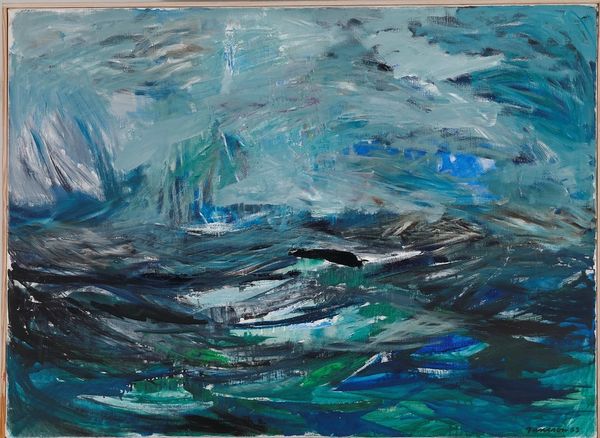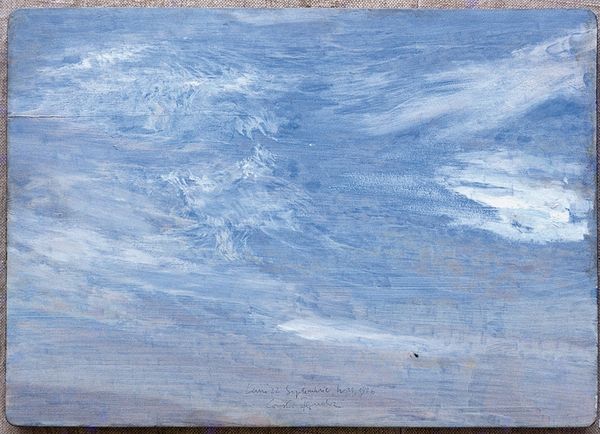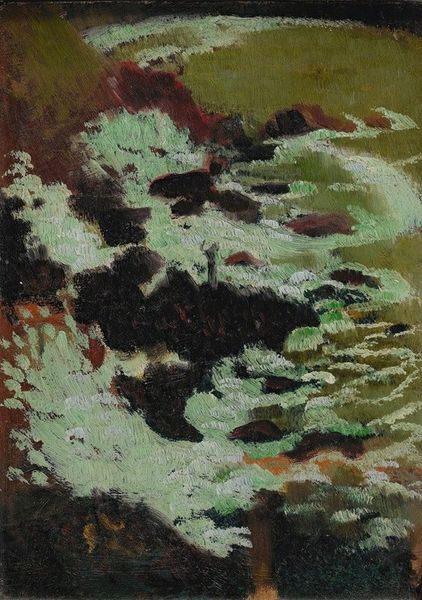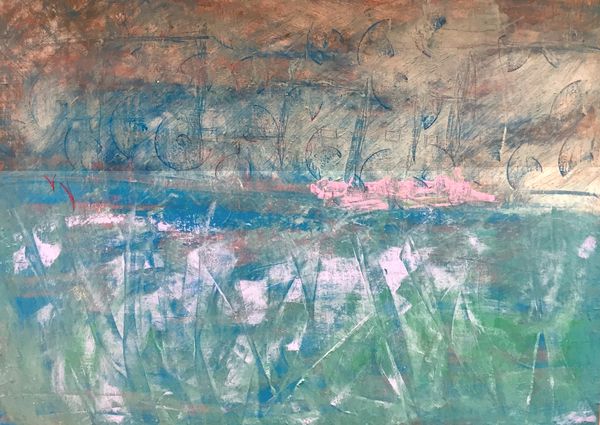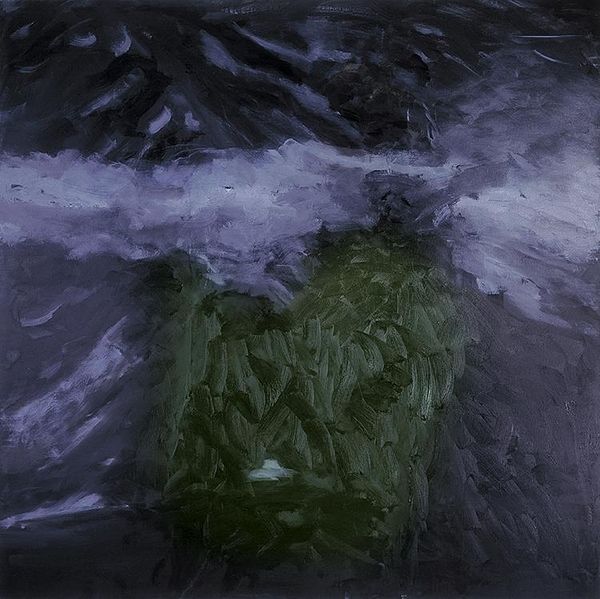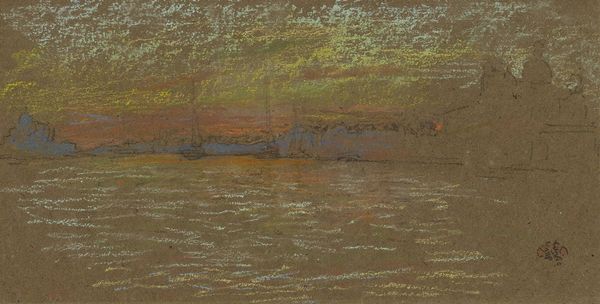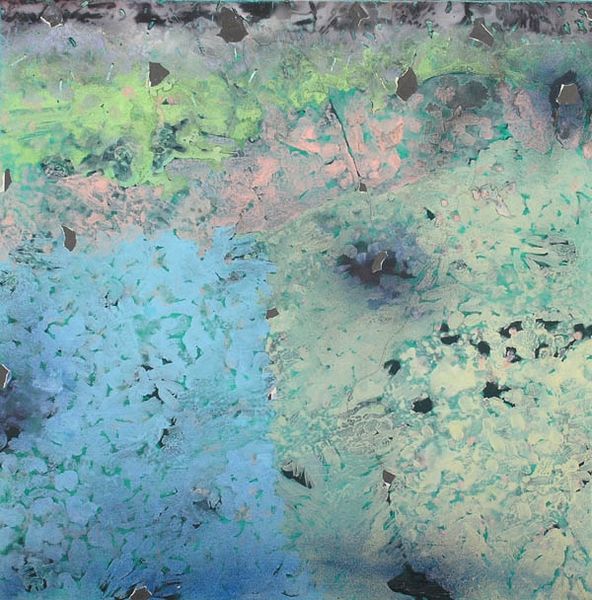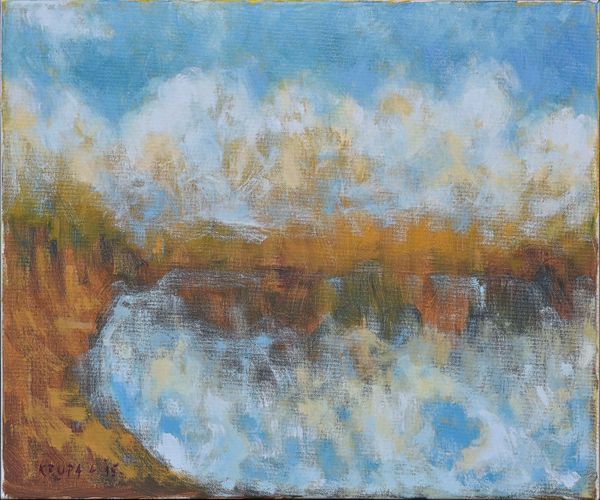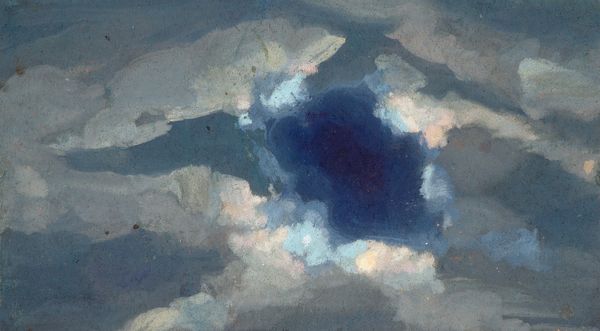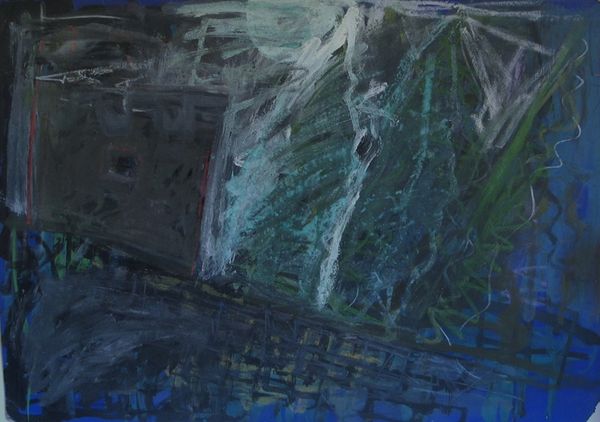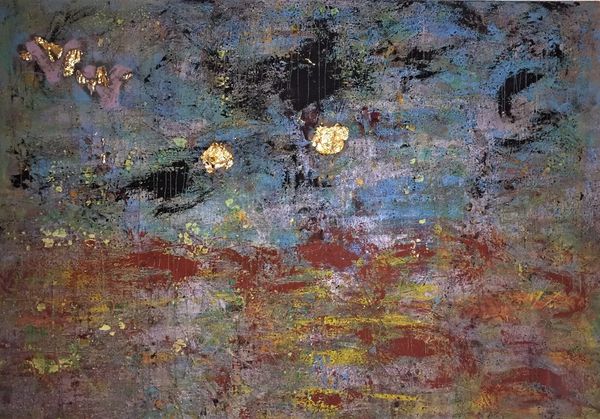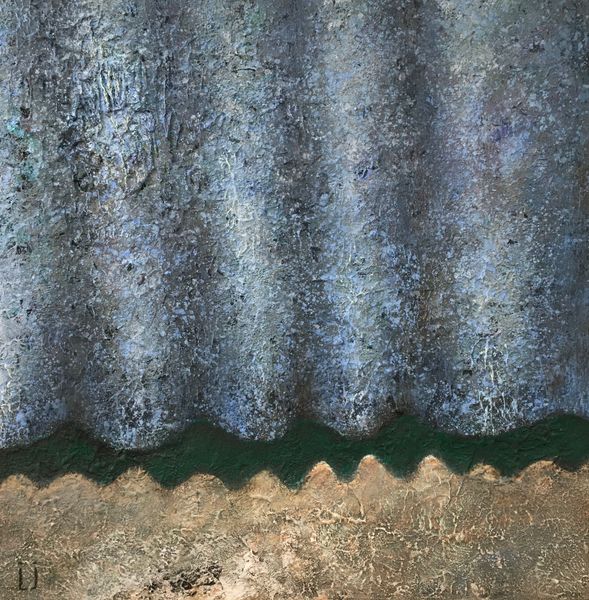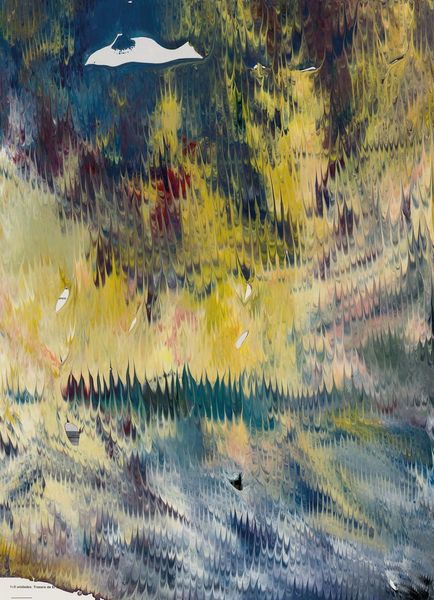
Dimensions: 62 cm (height) x 98 cm (width) (Netto), 82.7 cm (height) x 118.2 cm (width) x 7 cm (depth) (Brutto)
Editor: August Strindberg’s "Storm in the Skerries. 'The Flying Dutchman'," created in 1892 using oil paint, really throws me. The overwhelming darkness gives it such a foreboding feel. What do you see in this piece? Curator: Beyond the immediate drama of the storm, I see a potent symbol of human struggle against immense forces, almost biblical in scale. The "Flying Dutchman" reference anchors this in maritime lore, a figure condemned to sail the seas for eternity. Consider what that symbolizes – perpetual unrest, a lack of grounding. Editor: So, you’re saying the storm is not just a storm? Curator: Precisely! It mirrors the internal turmoil, the 'storm' within the individual psyche. The churning sea, rendered with such impasto and raw energy, embodies the subconscious – that vast, unpredictable space. Notice how the dark, oppressive sky seems to press down? It's a psychological weight, perhaps a reflection of Strindberg's own battles with mental health. What emotions do the colours evoke in you? Editor: Definitely a sense of despair, maybe isolation? The lack of bright colours amplifies the somber mood. It almost feels like a landscape of the mind. Curator: Exactly! The imagery taps into primal fears. The perpetual voyage, the unattainable shore. Think about the symbolic weight of water: creation, destruction, the unconscious. Strindberg uses the maritime setting to portray inner conflict and emotional states through recognisable cultural symbols. Editor: That's fascinating; I was so focused on the aesthetic I overlooked the cultural and personal symbolism embedded in the painting. I will remember this on my next museum visit! Curator: Indeed, appreciating the artwork with its cultural context certainly helps bring out so much more from what it can offer us as individuals and as members of the human community.
Comments
statensmuseumforkunst almost 2 years ago
⋮
A heaving blue-green sea meets bluish-black, cloudy, stormy skies. A sombre image of violent forces of nature where the expressive feel is intensified by the fierceness of Strindberg’s spatula work. He found the scene depicted at Dalarö in the Stockholm skerries in the summer of 1892. The painting as a valve To August Strindberg the playwright and author, painting served as a valve capable of venting the emotional chaos and pressure he continually found himself under, particularly during one of his many crises. The painting begins where the words stop, or where words cannot adequately express the overwhelming feelings of rage, jealousy, loneliness, and anxiety. Automatic art In an essay from 1894 entitled Nye Kunstretninger! eller Tilfældet i den kunstneriske skaben (New directions of art! or Chance within creativity) Strindberg described his method as automatic art. He worked very intuitively, translating his mental state into images with brief, fierce bursts of activity. That is also why he chose small-scale formats; in fact this painting, which Strindberg called The Flying Dutchman as a reference to Richard Wagner’s (1813-1883) lonely, ever roaming captain, is one of his largest. Strindberg the visual artist did not limit himself to painting only; throughout most of his life he worked with photography and photographic experiments.
Join the conversation
Join millions of artists and users on Artera today and experience the ultimate creative platform.
